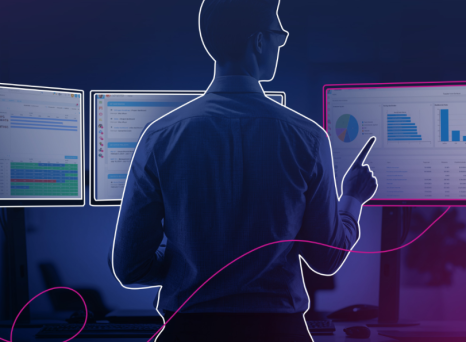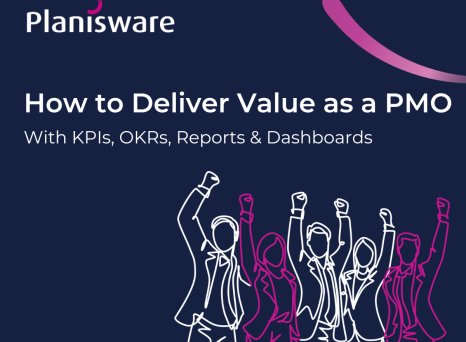No matter how your business plans to measure success, you need a reliable way to track your metrics. A PMO will provide this by creating a project dashboard that will consolidate your data, so you can view and analyze it in one place.
The metrics you choose to track in your projects will be specific to the objectives you want to achieve. An effective project dashboard will put all this key information at your fingertips, empowering you to make data-driven decisions and hit your goals faster.
So, what features should your project dashboard include?
1. Activity tracking
This dashboard component will give you a general overview of all project-related activities, including:
- Deadlines: The more projects in your portfolio, the more difficult it will be to keep track of deadlines. Activity tracking will make information like deadlines and project dependencies easily available and notify you when a deadline is imminent.
- Upcoming events: You have multiple events surrounding a project, like client meetings and internal project reviews. Activity tracking will remind you when these events will take place, as well as flag any scheduling conflicts.
- Resource availability: If you require certain skill sets for an upcoming project, you can use the activity tracking component to ensure the necessary resources don’t have conflicting projects or upcoming leave.
2. Risk status
Risks, good or bad, will affect your projects. As such, you’ll want to know what events or conditions might occur, as well as the impact and probability of each risk.
A project dashboard should provide detailed information on risks and issues, including their impact and severity:
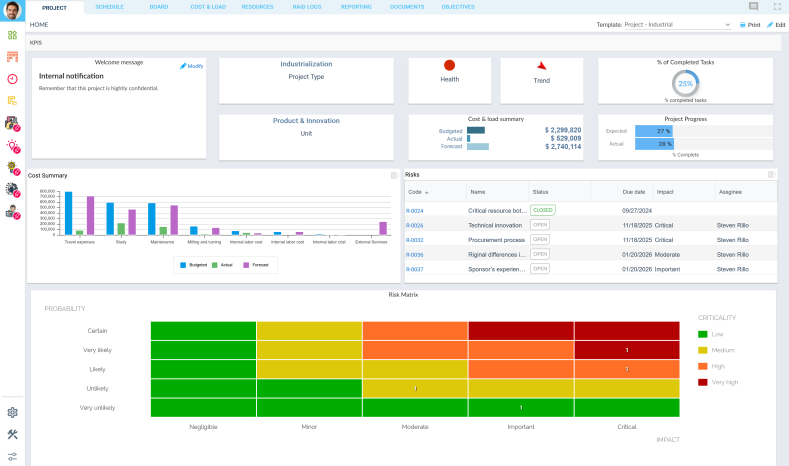
You can then evaluate your risk status, and decide what actions to take:
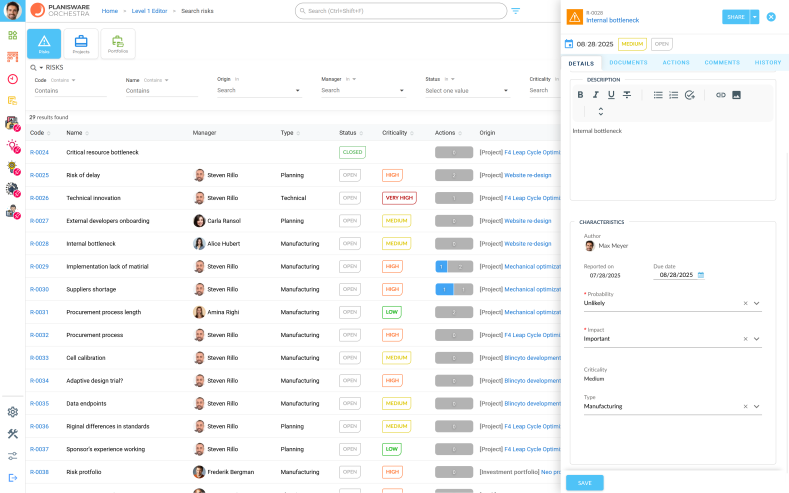
And, of course, you can log these actions in your project dashboard so all stakeholders are aware of not only what you did, but why.
3. Financials
For more mature organizations, you might also need to track financial data. As such, you will want to use your project dashboard to follow:
- Net Present Value (NPV): This is the difference between income and outlay over a period of time, indicating whether or not a project is profitable.
- Internal Rate of Return (IRR): This is the rate of growth that a project generates within the year.
- Expected sales: This is a breakdown of your sales forecasting by region. It helps you make more informed decisions about your marketing efforts, capacity planning, resource allocation, and more.
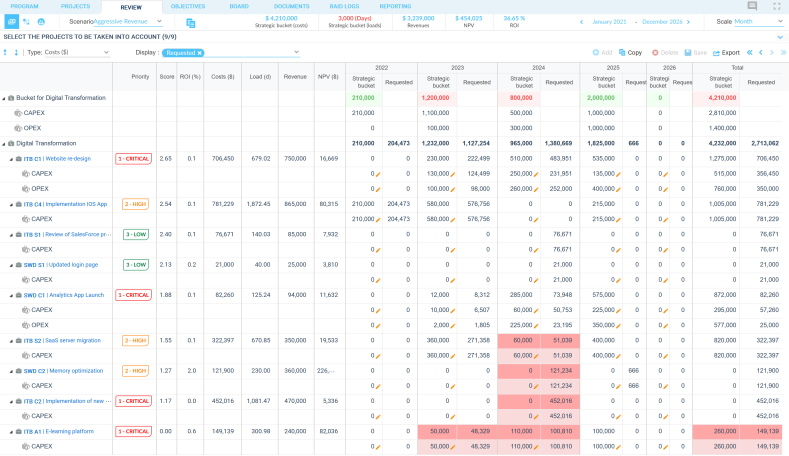
4. Information on strategic alignment
When you put your strategic vision at the forefront, you prioritize projects that align with business objectives. Projects that don’t fall under this vision shouldn’t make it into your portfolio. But how do you keep the business strategy front of mind for all stakeholders, so a less valuable project doesn’t slip through?
A modern project dashboard will enable you to input your OKRs and track your success in a tangible, data-driven way. That way, you can see what actions, both past and present, serve your business as a whole.
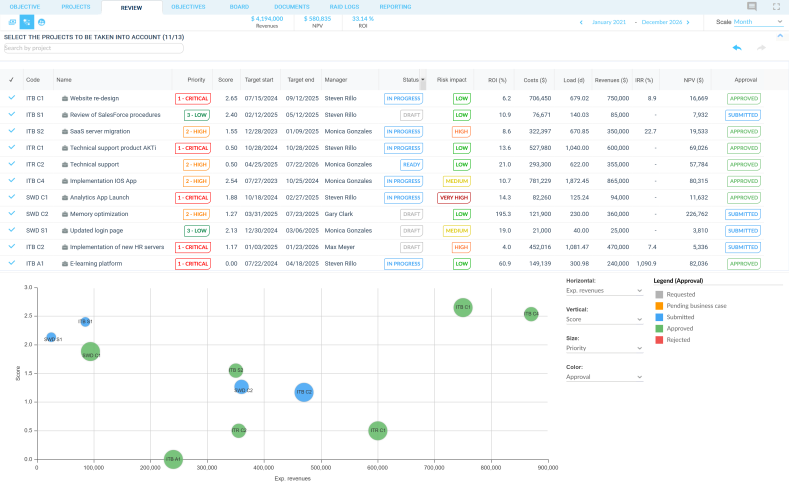
5. Change request and decision tracking
One of the biggest barriers to project success is lack of change control. Without seeing all project change requests and decisions, you might not implement the right changes, which could impact the success of your project. Or, you might implement these changes, but your stakeholders won’t know, leading to misalignment between their expectations and yours and, ultimately, dissatisfaction.
An accessible project dashboard that stores all change requests and decisions will act as a single source of truth. This will ensure your stakeholders’ understanding of the project continues to align with your own.
6. Time tracking
Time tracking reveals how long your resources spend on specific tasks and how long it takes to complete an entire project. This is important on 2 levels:
- It allows you to assess your time estimates, and more effectively allocate tasks down the line. This will ensure your resources won’t be under or over-capacity.
- It allows you to better understand the skill sets of each resource, and who is performing above or below expected productivity levels. As a result, you can pinpoint who needs additional training and who is ready for a greater challenge.
7. Budget management
Project budgets help you determine your limitations when sourcing and allocating resources. However, as your project progresses—possibly with changes in deliverables and scope—you must have continual visibility over your spending. This will enable you to prioritize the more important project tasks, should it be necessary.
A project dashboard lets you keep track of your spending, ensuring you don’t run out of money before project completion.
8. Resource actuals vs. estimates
You might start a project with a clear understanding of the skills, materials, and facilities required. However, accurately determining the number of necessary resources takes it a step further, as you must also consider factors like capacity and resource availability.
Because of this, your estimate of resources may differ from the resources you actually use. If you can track this metric in your project dashboard, you’ll be able to allocate resources more accurately to future projects.
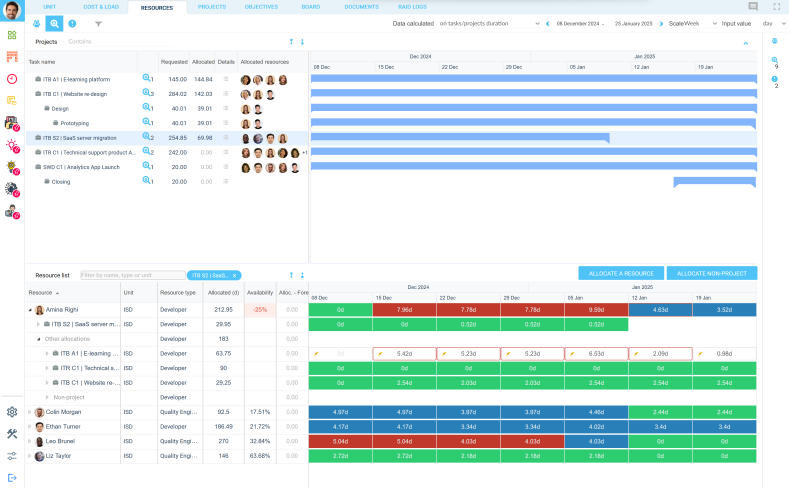
9. Personal to-do-list
Every project involves multiple moving parts, and when assigning work to your teams, you might not outline the specifics of each task. Instead, it's up to them to take the necessary actions to effectively execute their responsibilities.
An easily accessible and updatable personal to-do list will empower all stakeholders to track and modify their own progress:
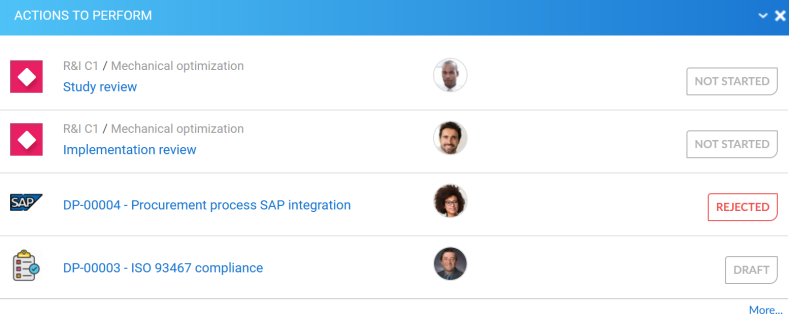
10. Project deliverables
A project deliverables report within your project dashboard will show real-time progress on each deliverable. Ideally, the report should tag any blocked deliverables due to issues or dependencies.
This is important, as it allows you to mitigate the situation. A project deliverables report will give you the visibility to reallocate resources to the necessary tasks.
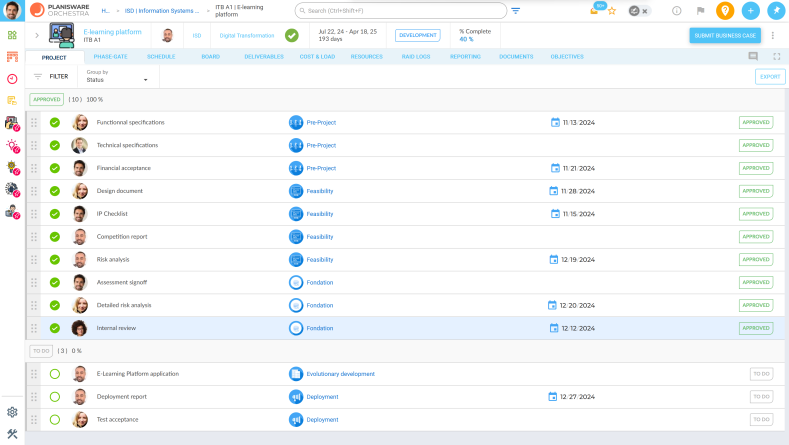
11. Milestone tracking reports
Milestones are the beating heart of a project, and tracking them is a reliable way to gauge your project’s health. However, it’s not enough to simply know if and when you’re meeting these milestones. To effectively assess your project’s progress, you need to understand:
- if you are on track to meet your milestones
- if you're at risk of missing them
- if any milestones have already been missed
This is a lot of information to process, so your dashboard should present data in an easily digestible format, such as a Gantt chart.
The project dashboard: a must-have for project success
Without real-time information and data-driven analysis, project success can often rely on luck.
To make success more predictable, project dashboards provide valuable insights that help align your projects with clear goals while allowing stakeholders to filter data according to their specific needs. In other words, project dashboards lead you toward better practices, ensuring continuous improvement in project management.
What sets Planisware apart is our ability to integrate comprehensive project data into a single platform, streamlining business operations and decision-making for greater success.
Looking to learn more about designing the perfect dashboard? Download our free Top PMO Dashboards guide.



